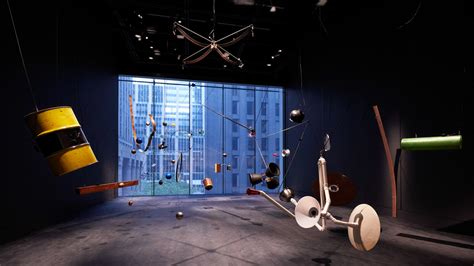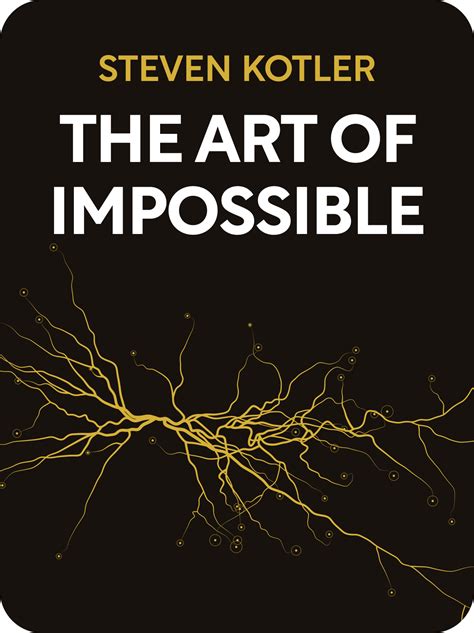tudor cage | Music of Changes tudor cage David Tudor and John Cage began to experiment with pure electronic works during the 1950s. They followed the 1940s work of Pierre Shaeffer with pieces like Cage's Williams Mix (1952) . Louis Vuitton Face Mask Brand New and Never Used/Mint Condition!!! Add some luxury to your wardrobe with this stylish Louis Vuitton Face Mask. Crafted from high-quality leather, this mask is perfect for any occasion.
0 · The Evolution of David Tudor’s Rainforest
1 · The Art of the Impossible
2 · Music of Changes
3 · John cage and david tudor correspondence interpretation and
4 · John Cage and David Tudor
5 · John Cage Biography
6 · John Cage
7 · David Tudor, John Cage, and Comparative
8 · David Tudor
9 · 10
Las Vegas, NV 89106. Hours: Wednesday, May 15: 2PM – 12AM. Thursday, May 16: 11AM – 12AM. Friday, May 17: 11AM – 3AM. Saturday, May 18: 2PM – 2AM. Sunday, May 19: 2PM – 2AM. Weather. The festival will take place rain or shine. Please keep up-to-date on weather reports and plan your attire and preparations accordingly. Zero Tolerance.
David Tudor and John Cage began to experiment with pure electronic works during the 1950s. They followed the 1940s work of Pierre Shaeffer with pieces like Cage's Williams Mix (1952) .
Music of Changes is a piece for solo piano by John Cage. Composed in 1951 for pianist and friend David Tudor, it is a ground-breaking piece of indeterminate music. The process of composition involved applying decisions made using the I Ching, a Chinese classic text that is commonly used as a divination system. The I Ching was applied to large charts of sounds, durations, dynamics, tempo and densities.
Unique among Cage's many collaborators, Tudor was a driving force, in ways both concrete and intangible, in the development of Cage's music during its most revolutionary phase, a phase .Cage was born September 5, 1912, at Good Samaritan Hospital in downtown Los Angeles. His father, John Milton Cage Sr. (1886–1964), was an inventor, and his mother, Lucretia ("Crete") Harvey (1881–1968), worked intermittently as a journalist for the Los Angeles Times. The family's roots were deeply American: in a 1976 interview, Cage mentioned that George Washington was assisted by a.In 1952, David Tudor sat down in front of a piano for four minutes and thirty-three seconds and did nothing. The piece 4’33” written by John Cage, is possibly the most famous and important . Among the most influential figures Tudor collaborated with was composer John Cage. Tudor premiered Cage’s landmark composition 4'33" in August 1953. In this remarkable silent work, Cage challenged us to consider .
The Evolution of David Tudor’s Rainforest
Tudor also gave early performances of works by Morton Feldman, Earle Brown, Christian Wolff and La Monte Young. The composer with whom Tudor is particularly associated is John Cage; .
Provides the complete correspondence between John Cage and David Tudor, making this is a valuable scholarly resource. Gives a full, chronological explanation of how Cage's closest .Tudor shared Cage’s belief in the spiritual properties of sound independent of any expressive character a composer might attempt to place upon them by fashioning musical relationships. .
John Cage and David Tudor : correspondence on interpretation and performance / Martin Iddon. pages cm. – (Music since 1900) Includes bibliographical references and index. ISBN 978-1 .Prevue Pet Products Featherstone Heights Tudor 291 bird cage is expertly designed to replicate the architectural style of a classic American home. This charming cage features two access doors, one in front plus one on the top, two plastic cups, two plastic perches and removable bottom grille and drawer for easy cleaning.
The Art of the Impossible
Listen to Cage: Variations IV - From a Live Performance at the Feigen/Palmer Gallery in Los Angeles, August 1965 by David Tudor & John Cage on Apple Music. 2006. 7 Songs. Duration: 1 hour, 5 minutes.
Tudor began working with John Cage in the early fifties, as a member of the Merce Cunningham Dance Company and with Cage's Project of Music for Electronic Tape. Tudor gradually ended his active career as a pianist, turning exclusively to the composition of live electronic music. In fact, Cage and Tudor sat quite close to one another at the center of the stage, Cage performing Mureau as a four-channel realization-one live channel against three pre-recorded tracks, all of them his own voice-and Tudor actively engaged in real-time processing of Cage’s vocal material, using it to generate electronic loudspeaker .Tackling the question of how much creative flexibility Tudor was granted, Iddon includes detailed examples of the ways in which Tudor realised Cage's work, especially focusing on Music of Changes to Variations II, to show how composer and .Cage Liners #2011. Hamster Haven 2-Story Starter Home #2012. Hamster Haven 3-story Happy Home #2013. Hamster Haven 3-Story Walk-Up Home #2014. Hamster Haven 3-Story Deluxe Home #3301. Corner Bird Box with Perch #60261. Lava Crunchers #60262. Lunchin' Logs #60265. Dreamers Delight #60266 .
Music of Changes
When Cage sent him a list of errata in the first part of Music of Changes, Tudor wrote back that he had already dis-covered them, and then presented the composer with a long list of questions about additional ambiguities he had found in Cage’s score. After responding to Tudor’s queries, Cage confessed that the notation of Music of Changes John Holzaepfel describes the scene when Cage told Tudor about possibly composing a piece made of silence. If it was the implications of Rauschenberg’s radical act . that emboldened Cage to begin composing the piece, it was Tudor’s interest in performing it that persuaded him to finish it. When the composer expressed doubts about .
Alex Ross on Cage’s radical composition “4'33" ” and the political roots of the artist’s passion for silence. . On August 29, 1952, David Tudor walked onto the stage of the Maverick . Drawing upon the virtuosity of pianist David Tudor, Cage allowed his compositional process to create a wide variety of musical events, piled up at times in thick layers. The piece, while based on a structure of silent time, is bursting with sound: effusive, bubbling over with energy, at times quiet and delicate, at others ferocious, thundering .
Anyway, we finished the TV business, drove back to the school, and I asked he teachers to recommend some second-hand bookstores in New Haven for David Tudor and I to visit. They did. A half-hour later when we walked into one of them, the book dealer said, "Mr. Tudor? Mr. Cage?" I said, "Yes." He said, "You're to call the State Teachers College .
John Cage (1912-1992): Variations II, for any number of players and any sound producing means (1961). Versione per piano preparato.David Tudor, prepared pian. David Tudor, a composer and performer of avant-garde electronic music who was closely associated with John Cage and who succeeded him as the music director of the Merce Cunningham Dance Company in .David Tudor is famous for his performances of John Cage’s controversial work 4’33”. His interpretation was a performance in three movements and is performed in silence.David Tudor and John Cage began to experiment with pure electronic works during the 1950s. They followed the 1940s work of Pierre Shaeffer with pieces like Cage's Williams Mix (1952) but moved away from tape music to live electronics. Cage's Fontana Mix (1958) and Cartridge Music (1960) stand today as monuments to this early work. These pieces .

Music of Changes is a piece for solo piano by John Cage. Composed in 1951 for pianist and friend David Tudor, it is a ground-breaking piece of indeterminate music. The process of composition involved applying decisions made using the I Ching, a Chinese classic text that is commonly used as a divination system.Unique among Cage's many collaborators, Tudor was a driving force, in ways both concrete and intangible, in the development of Cage's music during its most revolutionary phase, a phase that began soon after Tudor appeared at a pivotal moment in Cage's career.John Milton Cage Jr. (September 5, 1912 – August 12, 1992) was an American composer and music theorist. A pioneer of indeterminacy in music, electroacoustic music, and non-standard use of musical instruments, Cage was one of the leading figures of the post-war avant-garde. In 1952, David Tudor sat down in front of a piano for four minutes and thirty-three seconds and did nothing. The piece 4’33” written by John Cage, is possibly the most famous and important .
John cage and david tudor correspondence interpretation and

Among the most influential figures Tudor collaborated with was composer John Cage. Tudor premiered Cage’s landmark composition 4'33" in August 1953. In this remarkable silent work, Cage challenged us to consider that any sound (even silence) could be music. Tudor explored this idea as well by creating unconventional sounds in his work.Tudor also gave early performances of works by Morton Feldman, Earle Brown, Christian Wolff and La Monte Young. The composer with whom Tudor is particularly associated is John Cage; he gave the premiere of Cage's Music of Changes, Concert For Piano and Orchestra and the notorious 4' 33".
Provides the complete correspondence between John Cage and David Tudor, making this is a valuable scholarly resource. Gives a full, chronological explanation of how Cage's closest collaborator worked on Cage's indeterminate scores.
Tudor shared Cage’s belief in the spiritual properties of sound independent of any expressive character a composer might attempt to place upon them by fashioning musical relationships. And his understanding of the task of the performer was nothing short of profound.
John Cage and David Tudor
John Cage Biography
EDC Las Vegas Lost and Found. Use this link to search for your lost items that has been turned in: Interior Lost & Found. Location | Carnival Square Hours: Friday - Sunday: 7:00PM - 4:30AM. Exterior Lost & Found. Location | Outside of Gate C Hours: Friday at 8:00AM - Monday at 5:00PM (open 24-hours) Camping Lost & Found. Location .
tudor cage|Music of Changes


























